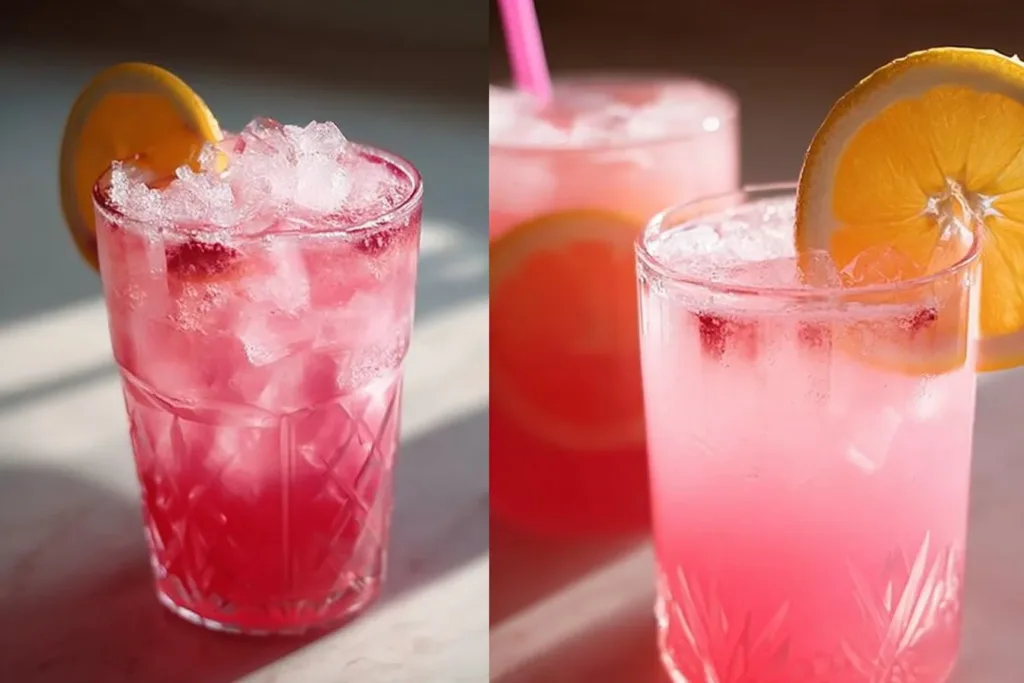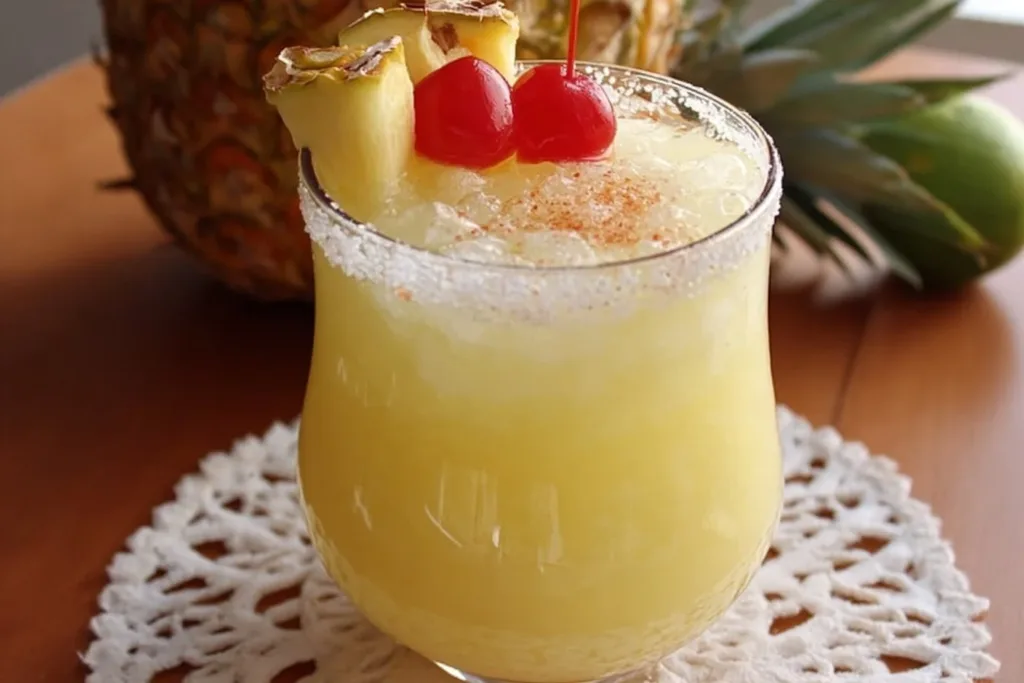Table of Contents
Tanghulu has a way of stopping you in your tracks. Maybe you saw it on a street food video and thought, how does fruit get that glassy crunch? Or maybe you just want a fun kitchen project that gets you off your phone for a bit. I’ve been there, staring at a bowl of berries wondering what to do with them before they turn sad. This is one of those low-ingredient, high-payoff treats that makes you feel clever. And yes, it’s totally doable at home without fancy gear. 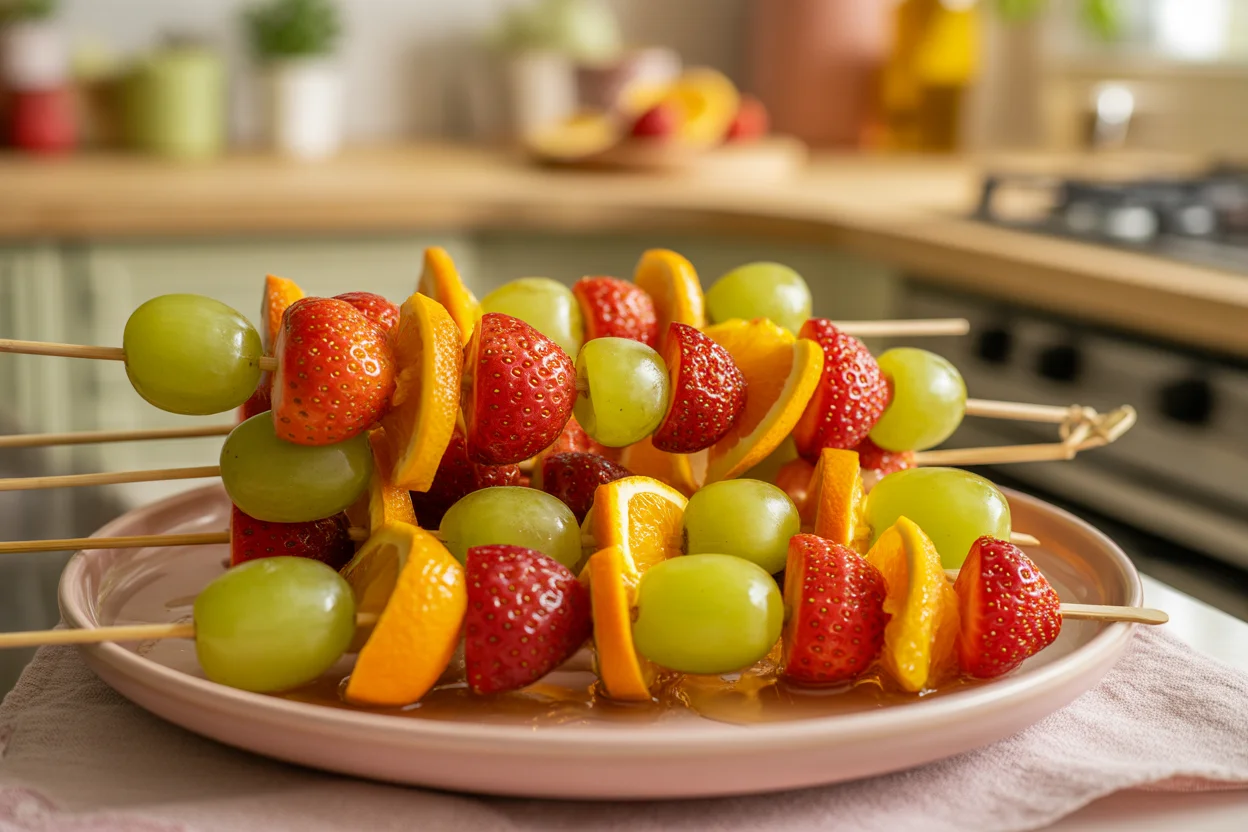
Why I love this Tanghulu recipe
I’m a big believer in recipes that respect your time. This one delivers a crunchy sugar shell, juicy fruit, and that satisfying crack when you take a bite. It feels a little magical, but it’s actually simple. That’s why I keep coming back to it.
Here’s what really wins me over:
It’s quick. You heat the sugar, dip the fruit, let it set for a minute, and snack. If I’m craving something sweet after dinner, I can have this ready before the tea kettle even cools off.
It’s so customizable. Strawberries are classic, but grapes, tangerine segments, small apple slices, and even blueberries work beautifully. I’ll often mix and match colors because it looks like a candy shop window at home.
It looks impressive. That glossy crystal coat turns everyday fruit into a special occasion. Friends think I spent all afternoon on it, when really I spent 20 minutes humming in my kitchen.
It’s nostalgic. The first time I tried Tanghulu on a trip, I couldn’t stop thinking about that first crackly bite. Recreating it at home brings back those happy memories in the simplest way.
“This was my first time trying this at home and it worked like a charm. The sugar crust is like stained glass around the fruit. I made a second batch right away.”
Another perk I love is how kids get involved. They don’t handle the hot sugar, of course, but they love picking fruits and arranging skewers. It becomes a sweet little assembly line with a big reveal.
Final thought for this part: if you’re feeling intimidated, don’t be. You’ll get the hang of the sugar stage quickly, and once you do, you’ll feel like a candy-making pro with none of the stress. 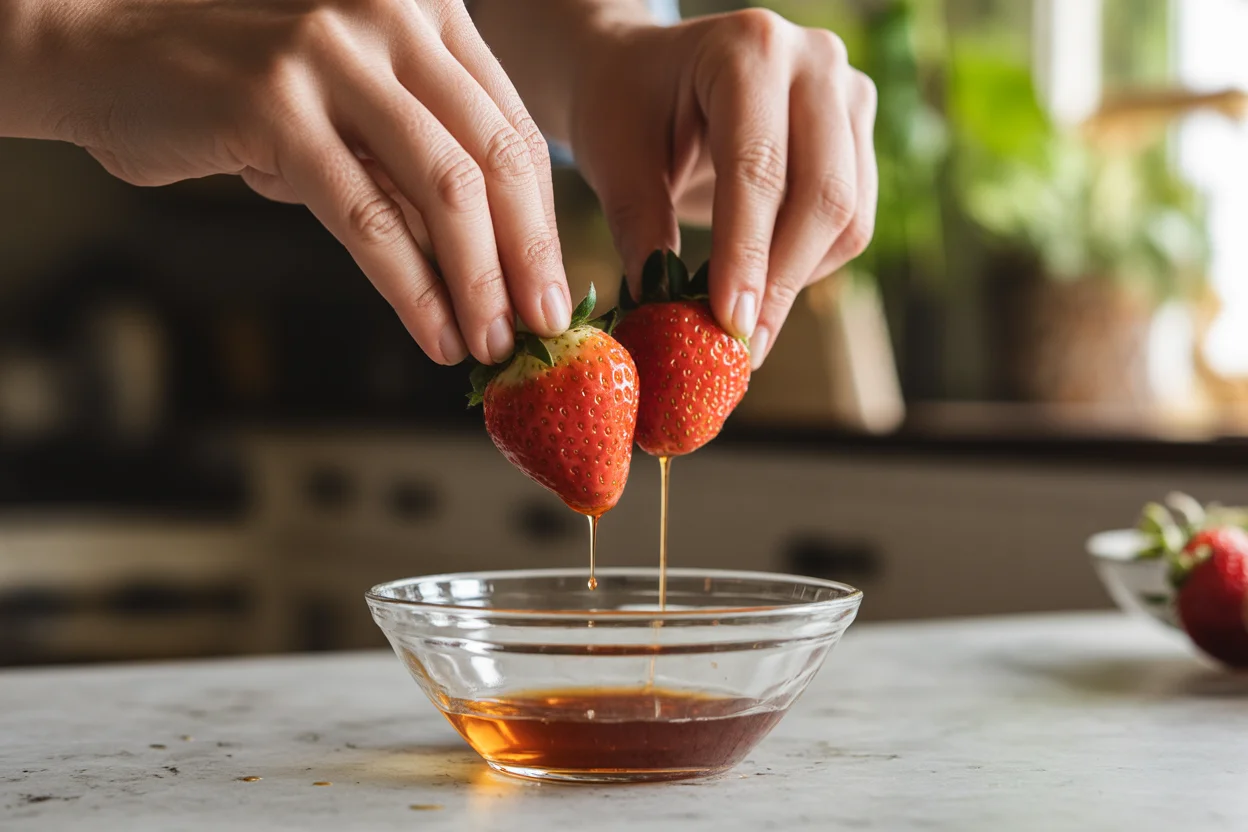
Ingredient notes For This Tanghulu Recipe
It only takes a few basics to make a glossy batch that actually sets. Here’s the lineup I rely on most:
- Fruit Choose firm and dry fruit. Strawberries, seedless grapes, tangerine or mandarin segments, apple slices, and blueberries are all great. Avoid very soft or overripe fruit because they can slide off skewers and cause the coating to crack oddly.
- Sugar Regular granulated sugar is what you want. It gives you a clear, shattering shell.
- Water A splash helps the sugar dissolve evenly before it boils.
- Optional corn syrup A tablespoon can help prevent crystallization if you’re new to candy making, but you do not need it. I make mine without it all the time.
- Skewers Bamboo skewers, cocktail sticks, or even clean wooden chopsticks work.
- Ice water bath For testing the sugar and stopping the cooking if needed.
Before I begin, I wash and fully dry the fruit. Moisture prevents the candy from sticking, so I take an extra minute to pat everything dry with paper towels. If you want a quick refresher on fast, effective washing, I put together a short guide on how I wash fruit quickly and safely. It’s a tiny step that makes a big difference.
I also like to set up a piece of parchment on a sheet pan so I can rest the dipped skewers without them sticking to the counter.
One more thing. If your kitchen is humid, open a window or run a fan. Humidity can soften the shell. It will still taste great, but the crunch lasts longer in drier air.
As for portions, I usually go with 1 cup sugar and about 4 tablespoons water for a small batch. It coats a couple of handfuls of fruit nicely. If you want to scale up, just keep the same ratio and work in batches.
How to make This Tanghulu
Once your fruit is skewered and dry, the rest is a fun little dance. I’m going to keep this clear and simple so you can follow along in real time.
- Prep your station Line a sheet pan with parchment. Set a small bowl of ice water nearby. Keep your skewered fruit on a plate within reach.
- Dissolve the sugar Add sugar and water to a small, heavy pot. Stir gently just until the sugar looks like wet sand. After that, no more stirring. Turn the heat to medium.
- Let it boil The mixture will go from cloudy to clear, then start to bubble and thicken. If a little crystallization appears on the sides, you can brush with a wet pastry brush, but I rarely need to. Try not to swirl the pot too much.
- Test for doneness You’re aiming for a brittle stage. If you have a thermometer, it’s around the hard crack stage, but don’t stress about the number. Do the ice water test instead: carefully drip a little syrup into the ice water. If it hardens into a crisp thread that snaps and feels glassy, you’re there.
- Dip the fruit Tilt the pot slightly to deepen the syrup pool. Dip and rotate each skewer to coat evenly. Let any extra drip back into the pot. Place on the parchment to set. It firms up fast, usually within a minute or two.
- Enjoy right away The crunch is at its peak when it’s fresh. If you want to hold them a bit, leave them at cool room temperature and avoid the fridge.
A few safety reminders from my own kitchen: the syrup is very hot, so keep little hands away from the stove. And never test hot syrup with fingers. Use that ice water test every time for a stress-free experience.
One more comfort tip. If your first batch is a little sticky, it’s usually because the syrup hadn’t reached the right point yet. Keep the pot on the heat for another minute and test again. The right spot is crisp, not chewy.
Works like a dream.
Tanghulu Recipe tips
Make it smooth and shiny
If you’re worried about the syrup crystallizing, don’t stir once the sugar dissolves. You can swirl the pot gently, but that’s it. Also, make sure your fruit is completely dry. A tiny bead of water can cause the coating to bead up or crack a bit strangely.
Flavor twists
While the classic is neutral and glass-like, you can add a whisper of flavor. A drop of vanilla or almond extract at the end is lovely. A tiny pinch of citric acid gives a sweet tart vibe. And if you’re feeling festive, sprinkle a few sesame seeds on the wet coating so they stick as it sets.
I also love playing with fruit shapes. Slice small apples into thin wedges and skewer them like little sails. Mandarin segments make adorable mini bites. If you’re curious about other quick candy projects for practice, this small batch caramel tutorial helps build confidence around hot sugar without overwhelming you.
Storage and serving
Serve the skewers the day you make them. They’re best within a couple of hours for max crunch. If you have leftovers, keep them out of the fridge in a dry place. Cold can make the coating go tacky. If it’s a humid day, keep them near a fan or dehumidifier.
To clean the pot, fill it with water and bring it to a simmer. The hardened sugar dissolves on its own. It’s oddly satisfying to watch it melt right off.
And if you’re plating these for a get together, group together three to five skewers in a glass jar or short tumbler. It looks cute and keeps the sugar shells from bumping into each other.
Origin Of Tanghulu
Though it’s a trending treat now, this candy fruit has deep roots. Tanghulu originated in China and traditionally features hawthorn berries threaded on sticks, dipped in hot sugar, and cooled until brittle. Street vendors often sell long, dramatic skewers that glitter in the light. It’s the kind of snack that’s fun to eat while you walk around, which explains its enduring popularity.
Over time, different fruits made their way in, and now you’ll see all kinds of seasonal variations. Even at home, the spirit of the original is the same: simple ingredients, a touch of craft, and a very satisfying crunch. I like that this treat respects the fruit. You taste the natural sweetness within the crackly shell, and it never feels heavy or complicated.
When I make Tanghulu at home, I try to keep that spirit in mind. It’s playful and celebratory, but also rooted in tradition. Respect the process, keep it simple, and let the fruit shine.
Common Questions About Tanghulu
Do I need a thermometer?
No. The ice water test is reliable. Drop a bit of syrup into ice water. If it hardens instantly and snaps clean, you’re ready to dip.
Why is my coating sticky?
Usually it’s undercooked syrup or high humidity. Cook a little longer and test again. Serve in a cool, dry area if possible.
Can I make these ahead?
They’re best fresh, but you can make them up to a couple of hours ahead. Keep them uncovered at room temp, away from moisture.
What fruits work best?
Firm fruit with dry skins: strawberries, grapes, blueberries, apple slices, and tangerine segments. Avoid very ripe, soft fruit.
What if the sugar hardens in the pot before I finish?
Gently rewarm over low heat until fluid again. If it gets too dark, start a fresh small batch to keep the flavor clean.
Let’s wrap it up and get you cooking
If you’ve been craving something delightful with hardly any ingredients, this is it. You’ll get that signature crack, the juicy burst of fruit, and the satisfaction of making a street-favorite at home. For more step by step inspiration, I like the clear walkthrough in Tanghulu Recipe – A Cozy Kitchen, and the simple measurements in Easy Tanghulu Recipe (3 Ingredients). If you want to dig into the background and classic hawthorn version, you can read more on Tanghulu – Wikipedia. Try a small batch tonight and see how fun it feels to crack into that shiny shell. I can’t wait to hear what fruit combo you go for first.
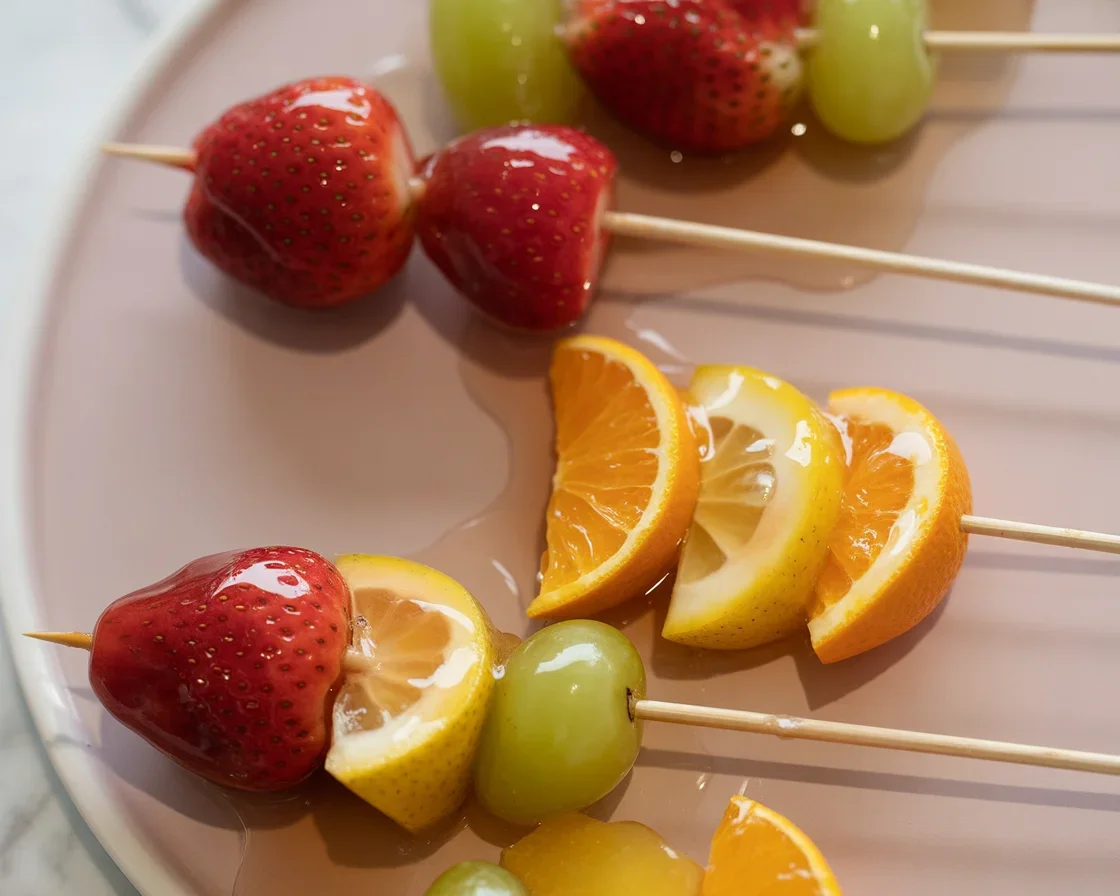
Tanghulu
Ingredients
Method
- Wash and fully dry the fruit. Moisture prevents the candy from sticking.
- Line a sheet pan with parchment paper and set a bowl of ice water nearby.
- In a small, heavy pot, combine sugar and water. Stir gently until it looks like wet sand, then stop stirring.
- Turn the heat to medium and allow the mixture to boil, becoming clear and thick.
- Use the ice water test to determine doneness: drop a bit of syrup into the ice water. If it hardens and snaps, it’s ready.
- Tilt the pot slightly to deepen the syrup pool. Dip each skewer of fruit into the syrup, coating it evenly.
- Let any excess syrup drip back into the pot and place the coated skewers on the parchment paper to set.
- Enjoy right away for the best crunch. Store any leftovers at cool room temperature in a dry place.


